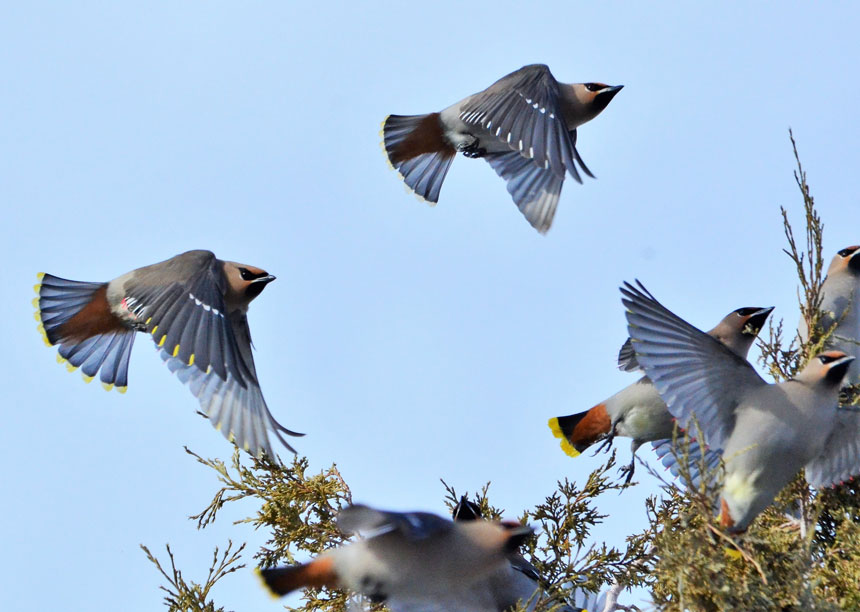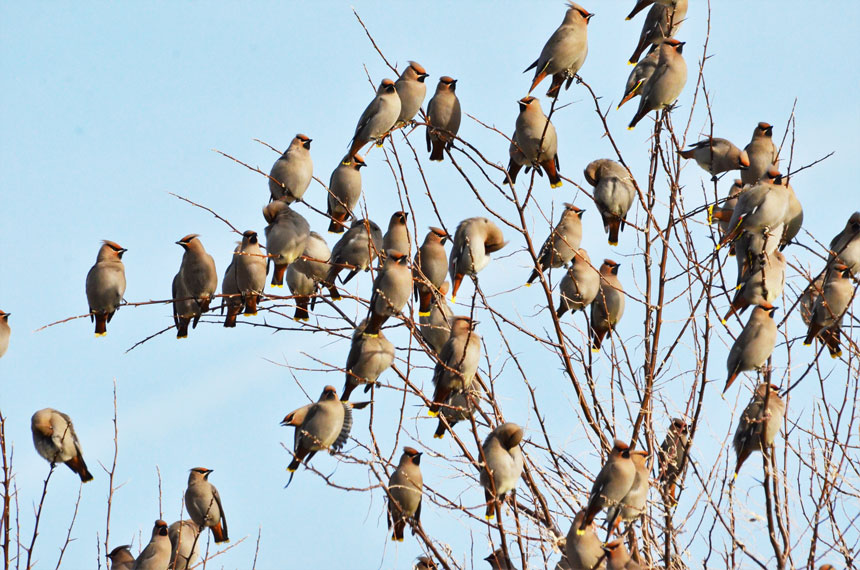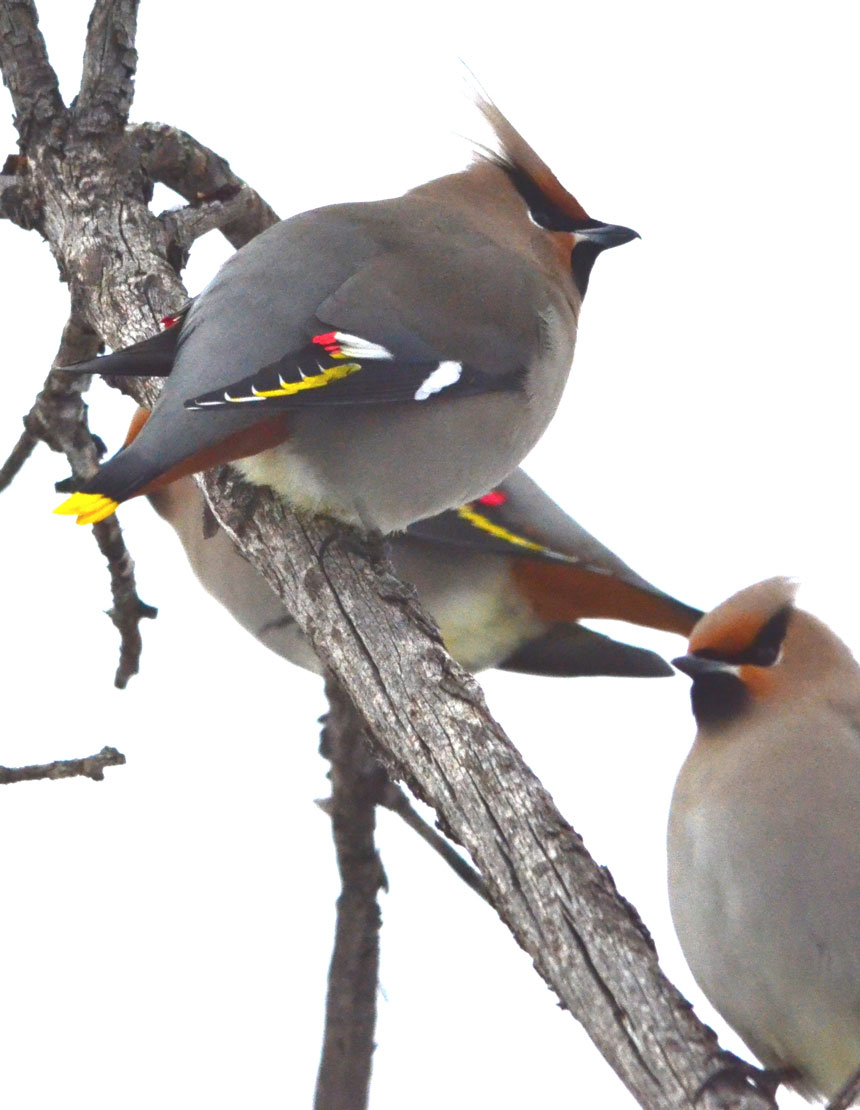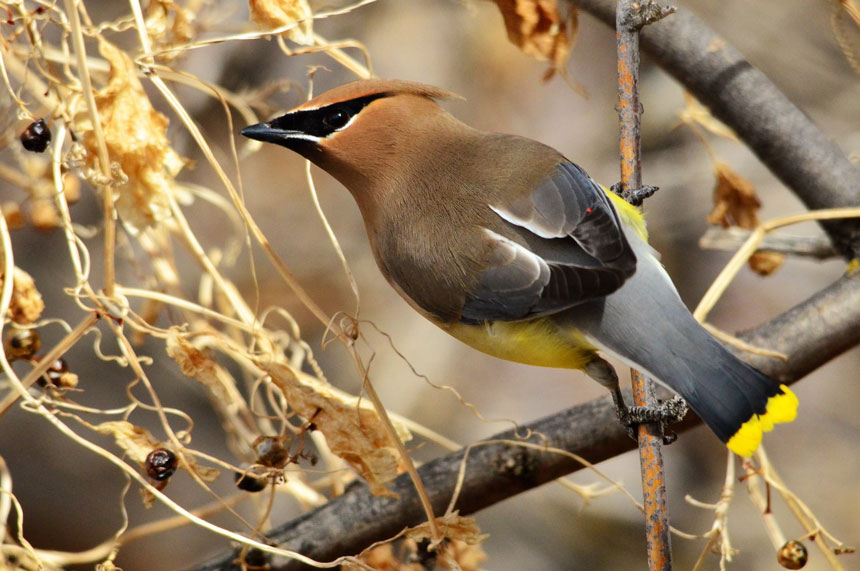SCHIESS: Bohemian Waxwings — nature’s party birds
Published at
The party had begun as a large flock of Bohemian Waxwings joined others already feeding on a crab apple tree in Ririe as I went to check for ice on the reservoir. Swaying uncontrollably in the tree some were already intoxicated from the frozen fermented fruit.
The activity resembled a group of college students at Party School, USA. Coordination for some was long gone. Some fluttered to the ground in a drunken stupor only to peck at fallen fruit, but missing it completely. Even though Bohemian Waxwings can metabolize alcohol more effective than humans, they can get drunk from the sugar-rich rotten fruit they consume during the winter.
As I watched, European starlings joined the party; no racism at this outing. The mixed group was soon joined by the smaller cousins of the Bohemians, a few Cedar waxwings had been contacted by the bird’s social media.
Many times the two species of waxwings travel and winter together during the winter in southeastern Idaho. They often gather in flocks of several hundred or more.

One of the best ways to tell the difference between the two is the coloration of their wings. Cedar waxwings will have only the red waxy tips on their wings while the Bohemians will have the red tips but have yellow and white markings in their wings. A yellow band on the tail is also an identifying mark for the larger Bohemians.
Bohemians get their name from their wandering throughout the winter to find enough food to eat. Being fruit eaters, their feeding habits require specialized areas. The haw berries and chokecherries along the Henrys Fork of the Snake River, the large patches of Russian Olives near Roberts, Market Lake and Mud Lake and juniper berries in the Heise area and desert are favorite places for these birds to gather.
The sugar-rich fruit lacks other needed nutrients so their large liver is necessary to turn the sweetness into energy but to do this they are required to drink lots of water or eat snow during their feeding.

When getting close to the large flocks be very careful as their waste is removed about four times a minute.
Unlike the Cedar waxwings that nest in the Upper Valley anytime of the year, most Bohemians go to northern Canada to nest. They are monogamous and will start courting before they leave their wintering grounds.
Their courtship behaviors are interesting, which includes touching bills (kissing) and exchanging gifts. The exchanging of gifts is unique as one bird will give another bird an item, keep it a short time and attempt to give it back. Once the item is accepted back, the marriage is complete.
Like many birds, the female Bohemian chooses her mate. The most desired males are those that have the more abundant and larger red “wax” tips on their wings; usually an indication of an older or a healthy male. The females don’t want to settle for less than a perfect mate.

Only the female will sit on the eggs while both parents feed the young. Most of the food for the young are insects before they can be fed fruit.
After the young have fledged it isn’t long before the waxwings gather in large flocks to head south. This year by November 15 several flocks of 50 or more showed up in the area. By January we may see flocks of 200 or more in the Roberts – Market Lake and Henrys Fork areas.
Once these flocks find the rotten crabapples and apples on trees in area towns, the drunken parties begin, mirroring what we look like when we are in the same condition.
Do they get hangovers? I am not going to get close enough to find out.

Living the Wild Life is brought to you by The Healing Sanctuary.


